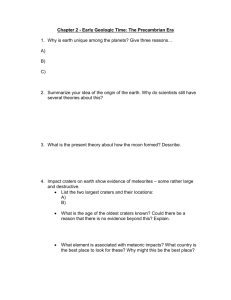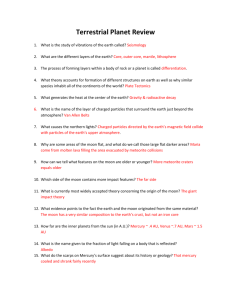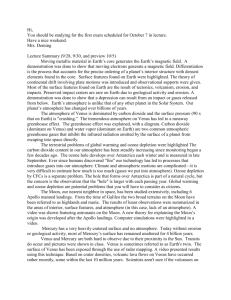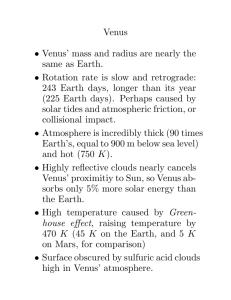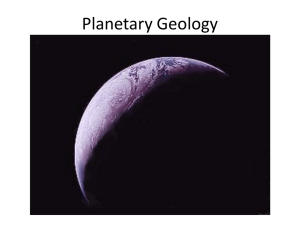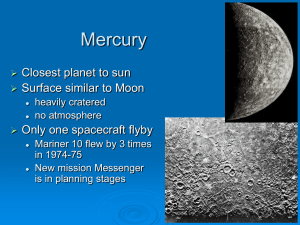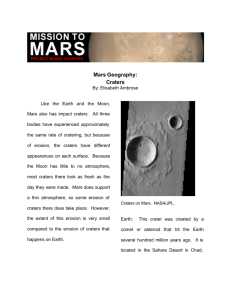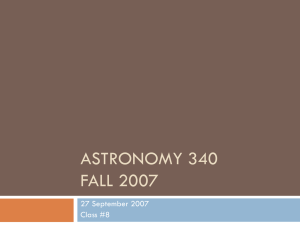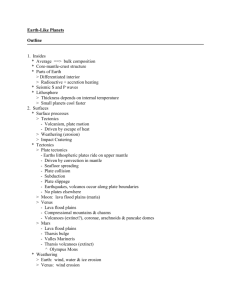Astr 150 – Midterm Review Fall 2006
advertisement
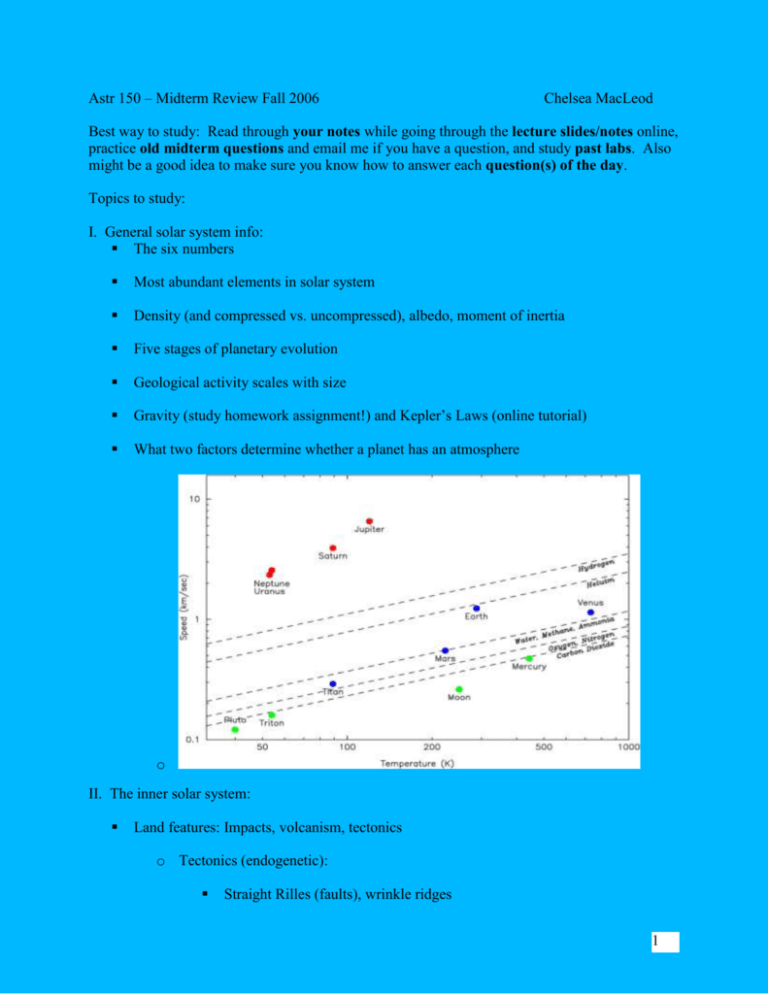
Astr 150 – Midterm Review Fall 2006 Chelsea MacLeod Best way to study: Read through your notes while going through the lecture slides/notes online, practice old midterm questions and email me if you have a question, and study past labs. Also might be a good idea to make sure you know how to answer each question(s) of the day. Topics to study: I. General solar system info: The six numbers Most abundant elements in solar system Density (and compressed vs. uncompressed), albedo, moment of inertia Five stages of planetary evolution Geological activity scales with size Gravity (study homework assignment!) and Kepler’s Laws (online tutorial) What two factors determine whether a planet has an atmosphere o II. The inner solar system: Land features: Impacts, volcanism, tectonics o Tectonics (endogenetic): Straight Rilles (faults), wrinkle ridges 1 plate tectonics o Volcanism (endogenetic): duration scales with size of planet Sinuous Rilles (lava channels/tubes), lava flows (mare) o Impacts (exogenetic): three types: simple, complex, impact basins ground folding out; rocks closest to rim are deepest and oldest use to age surface (crater counting crater density plots) R plots: use to characterize population of craters; shows fraction of total area covered by craters of different sizes Crater density plots and R plots are similar among small worlds (moon, Mercury, and Mars) and similar among larger worlds (Earth and Venus) (Why?) The Moon: o negligible atmosphere, uniform density o characteristics of lunar mare and lunar highlands age, albedo, types of rocks found in each (study Moon Rocks lab) o Moon origin: 4 theories o why we love the moon (it stabilizes our tilt) Mercury: o negligible atmosphere 2 o large iron core => scarps o Caloris Basin; hilly and lineated terrain on opposite side of Caloris Basin Mars: o Thin cold CO2 atmosphere => low thermal inertia o splash craters o Tharsis range: huge volcanoes due to low gravity and lack of plate tectonics o Evidence for water in Mars’ past: hematite spheres, layered sedimentary rock, and weathered rock => thicker past atmosphere Venus: o Thick hot CO2 atmosphere => high thermal inertia o young surface; use radar to image o Coronae (blobs): result from mantel plumes. There are also antiplumes o Distribution of craters uniform over entire surface => all same age Earth: o has been hit most in solar system o craters get worn away in many ways o KT event Evidence: Iridium, shock lines in minerals Global impact Terrestrial atmospheres: 3 o can be blown away by huge impacts o secondary atmosphere: Earth, Venus, and Mars o How did Venus lose H2O, and Earth lose CO2? o Greenhouse effect 4
